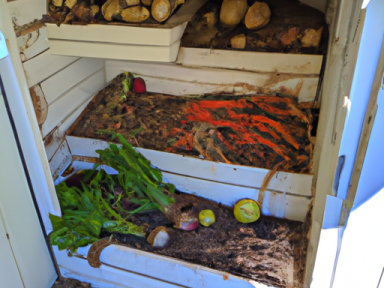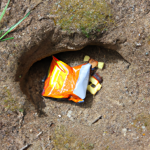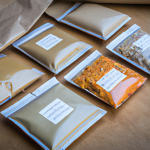**Building a DIY Root Cellar**
Are you prepared for the unexpected? In times of crisis or disaster, having access to fresh food can mean the difference between survival and desperation. That’s why it’s important to have a reliable food storage solution, and nothing beats the efficiency and effectiveness of a root cellar.
A root cellar is a naturally cool and humid underground storage space that keeps your fruits, vegetables, and preserves fresh for months. It’s a time-tested method that our ancestors used to ensure their survival during harsh winters and extended periods of scarcity. Today, I’m going to guide you through the process of building your very own DIY root cellar, so you can take control of your food security.
**Step 1: Location, Location, Location**
The first step to building a root cellar is choosing the right location. Ideally, you want a spot that is well-drained and away from any potential sources of contamination. Look for a spot that stays consistently cool, such as the north side of a hill or a shaded area near your home.
**Step 2: Excavation**
Once you’ve chosen the perfect location, it’s time to start digging. Dig a hole that is deep enough to accommodate your needs. The size of your root cellar will depend on the amount of food you plan to store and the space you have available. Aim for a depth of at least 4 feet to ensure a stable temperature throughout the year.
**Step 3: Framing and Insulation**
Next, it’s time to reinforce your excavation with sturdy framing. Use pressure-treated lumber or concrete blocks to create the walls of your root cellar. Make sure the walls are strong enough to withstand the pressure of the surrounding soil. Insulate the walls with rigid foam insulation to keep the cold in and the heat out. This will help maintain a stable temperature inside the cellar.
**Step 4: Ventilation**
Proper airflow is crucial for the success of your root cellar. Install small vents near the top and bottom of the walls to allow for adequate ventilation. This will help regulate the humidity levels inside the cellar and prevent the growth of mold or mildew.
**Step 5: Flooring and Shelving**
For the flooring, use materials that are easy to clean, such as concrete or tiles. This will help maintain a clean and sanitary environment for your stored food. Install sturdy shelving units to maximize the storage space and keep your produce organized. Make sure the shelves are made of non-reactive materials to avoid any chemical interactions.
**Step 6: Finishing touches**
To ensure optimal conditions inside your root cellar, consider adding a thermometer and hygrometer to monitor the temperature and humidity levels. You can also install a solar-powered fan to enhance air circulation during hot summer months.
**Step 7: Stocking Your Cellar**
Now that your DIY root cellar is complete, it’s time to stock it with your favorite fruits, vegetables, and preserves. Remember to rotate your stock regularly to prevent spoilage and to ensure freshness.
By building a DIY root cellar, you are taking a proactive step towards self-reliance, preparedness, and food security. In times of uncertainty, it’s vital to be prepared for whatever may come our way. Don’t wait until it’s too late – start building your root cellar today and take control of your food supply.




GIPHY App Key not set. Please check settings